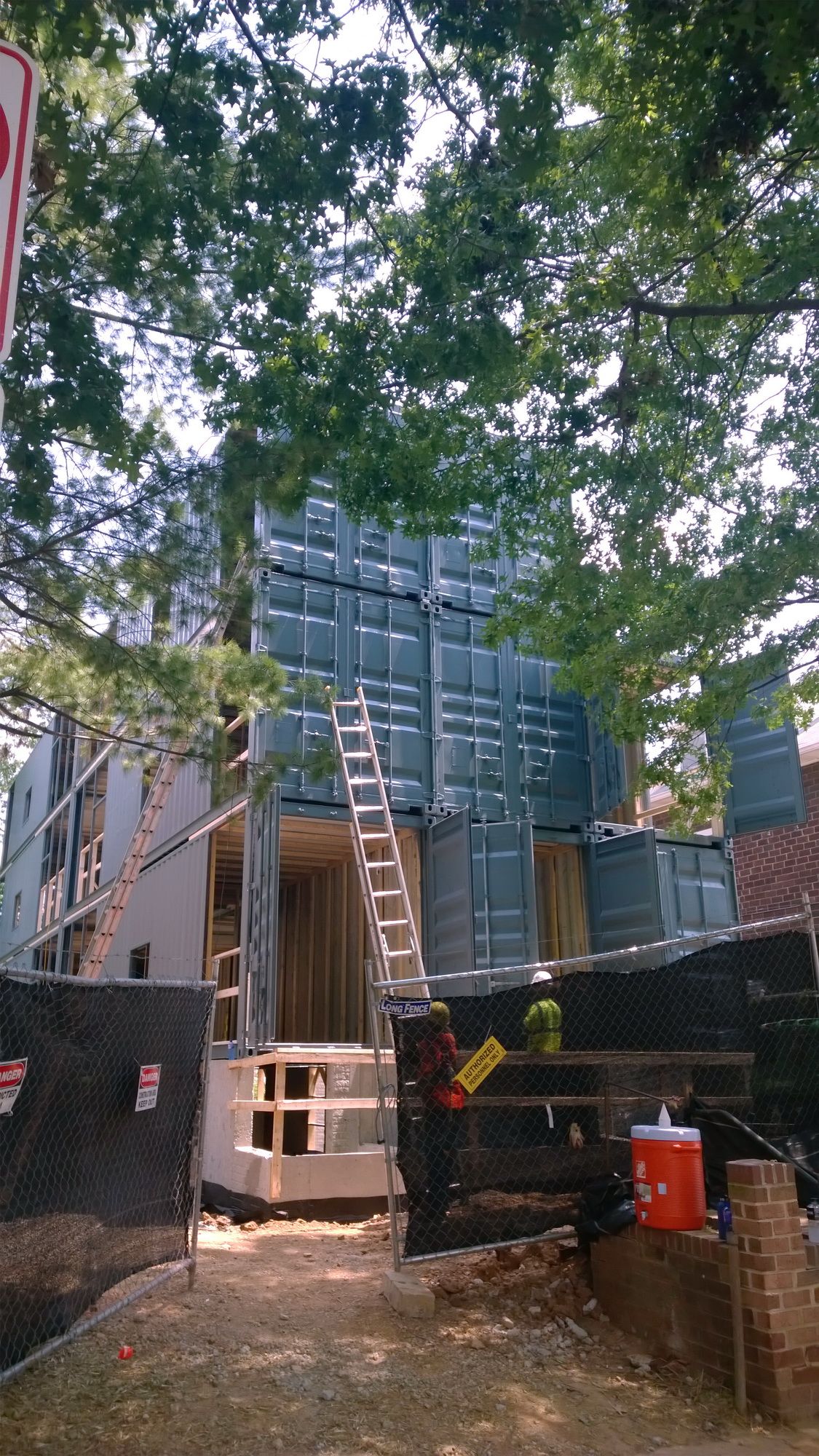
By the first week of September, tenants should be moving into an unusual apartment house in Washington, D.C., known as SeaUA, with no way of knowing whether their bedrooms and kitchens once were used to ferry bales of alfalfa to China or haul running shoes from Thailand to Los Angeles.
The novel housing project has a conventionally built lower level, while its upper three floors are made of 18 repurposed shipping containers, each 8 ft. wide, 40 ft. long, and 9-1/2 ft. high. Architect Travis Price calls the project the “ultimate ecological dream.”
The project got its start when two former students at Catholic University, Matthew Grace and Sean Joiner, both 31, decided last winter to tear down an investment property they owned rather than repair it. They hired Kelly Davies, now Grace’s fiancee, and Price, her boss at Travis Price Architecture, to design a replacement.
Grace was stunned by early construction estimates. “I was like, ‘Stop what you’re doing. What is that number?'” he told an interviewer from The Washington Post.
Well, Price countered, what about doing the project with old shipping containers?
Housing for students or young professionals
The steel shipping containers have been arranged in three floors of six containers each. Each level provides six bedrooms and six bathrooms, with a common area in the middle for an open kitchen/living/dining space. A bump-out at mid-span accommodates a dining table and part of the stairwell. The basement level has been framed out to match the upper stories; it also has six bedrooms.
To create the common living areas, Price cut away some of the inner walls of adjoining containers. He also cut openings for windows in the corrugated walls of the containers, although some bracing had to be added to compensate for the loss of structure. “You can play with it all you want,” he said by telephone. “It’s a delicate game, but a fun one.”
In the same telephone interview, Davies provided information on framing and insulation. The interior walls are framed with 2x4s and insulated with closed-cell polyurethane foam insulation for an estimated R-value of 25. Ceilings are also framed with 2x4s and insulated with spray foam, while the flat roof on the top floor gets spray foam on the inside and tapered rigid insulation on the outside. The roof assembly has a total R-value of roughly 52.
Containers actually sit 3 in. apart, and the gap is filled with closed-cell foam. “It’s like a Thermos bottle,” Price said.
Windows are a mix of fixed and operable units, and two ducted minisplit units heat and cool each floor. With all that foam insulation, the units should be very tight, but Price said the construction budget precluded a blower-door test.
In all, Price said, the project should come in at about $125 per sq. ft., roughly half the cost of typical construction, and in a shorter amount of time.
An ideal material for building
Price said the containers are letter-made for use as environmentally friendly housing. For one thing, steel has much less embodied energy than other common building materials, particularly brick. Also, because the watertight containers were engineered for utilitarian duty at sea, there isn’t an ounce in them that’s not structural.
According to the story in the Post, Price had wanted to use shipping containers for housing ever since he was in college. In the 1970s, he proposed building a 10-story steel frame to house sea-container houses. Families would be able to unplug the utilities and move the container-houses when they left town.
The project is down the street from Catholic University. Its name is a play on words: “Sea” from the original purpose of the containers, and “CU” from the university. Most of the units have apparently been leased, and a similar project in the area is under consideration. There’s certainly no lack of raw materials. According to Price, there are some 700,000 used containers in the United States alone.
A used container typically sells for about $2,000.
Fine Homebuilding Recommended Products
Fine Homebuilding receives a commission for items purchased through links on this site, including Amazon Associates and other affiliate advertising programs.

Affordable IR Camera

Reliable Crimp Connectors

Handy Heat Gun


























View Comments
Even if you already know what kind of containers you want, figuring out shipping containers and buy them is a distinct difficulty. Whether you want to buy a new or used container, starting your search online gives you access to a larger inventory than you’d discover with a local container sales company, and you don’t even have to leave your house.
https://progeco-holland.com/